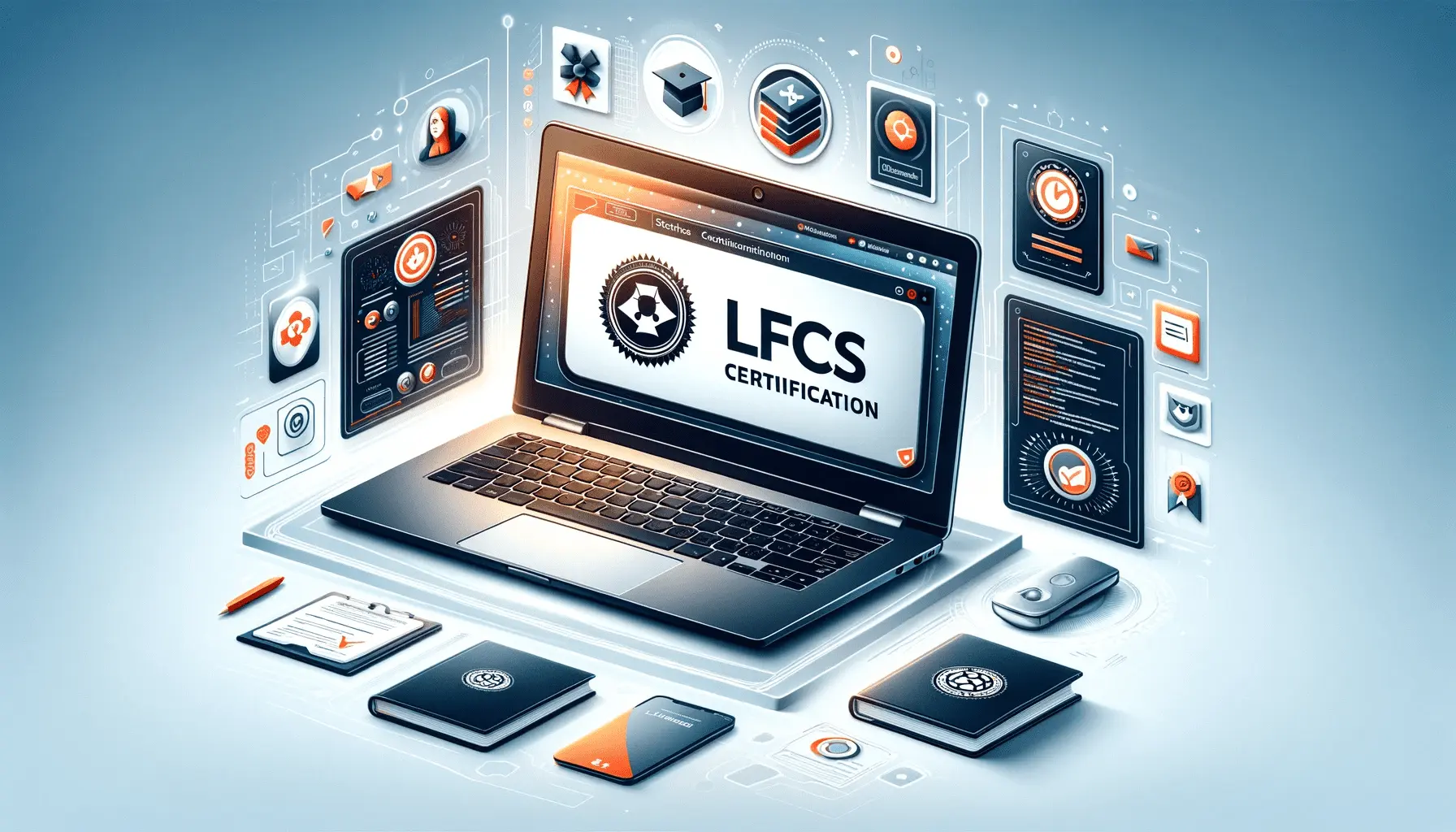Overview
Welcome to our comprehensive Linux Foundation Certified System Administrator (LFCS) certification training, designed to help you acquire the knowledge and skills necessary to become a proficient Linux system administrator. The LFCS certification is offered by the Linux Foundation and is highly regarded in the industry as a validation of your Linux administration expertise.
What You’ll Learn
In this training, we cover the following key aspects of the LFCS certification:
Linux System Architecture: Gain a deep understanding of Linux system architecture, including the kernel, file system hierarchy, and essential components. Explore Linux distributions and package management systems.
Command Line Skills: Master the command line interface in Linux. Learn essential command line tools and utilities, file management commands, and text processing techniques. Understand command syntax, input/output redirection, and pipelines.
System Administration: Develop expertise in Linux system administration tasks. Learn how to configure and manage user accounts, groups, and permissions. Explore process management, scheduling tasks with cron, and system initialization with systemd.
Networking and Security: Understand networking concepts and configurations in Linux. Learn how to configure network interfaces, manage network services, and troubleshoot network connectivity issues. Explore Linux security measures, including access controls, firewalls, and user authentication.
Storage and File Systems: Dive into Linux storage management and file systems. Learn how to manage disks, partitions, and file systems using tools like fdisk and mkfs. Understand logical volume management (LVM) and file system encryption.
Shell Scripting and Automation: Discover the power of shell scripting for Linux administration. Learn how to write and execute scripts to automate tasks, perform system administration functions, and enhance productivity. Explore script syntax, variables, loops, and conditional statements.
System Monitoring and Troubleshooting: Develop skills in system monitoring and troubleshooting. Learn how to analyze system logs, interpret error messages, and use diagnostic tools effectively. Explore techniques for performance monitoring and tuning.
Throughout the training, we provide comprehensive study materials, practical examples, hands-on exercises, and exam-focused guidance to help you prepare for the LFCS certification exam. Our training is aligned with the exam objectives, ensuring you have a thorough understanding of the topics covered in the certification.
By the end of this training, you will be well-prepared to take the LFCS certification exam and demonstrate your proficiency in Linux administration. The LFCS certification is recognized globally and can enhance your career prospects in Linux system administration and related roles.
Chapters
Chapter 1 : Introduction to Linux Foundation and LFCS Certification
| Topics | Read Time |
|---|---|
| Overview of Linux Foundation | |
| Introduction to LFCS certification | |
| Exam format and requirements |
Chapter 2 : Linux Basics and Command Line Interface (CLI)
| Topics | Read Time |
|---|---|
| Introduction to Linux operating system | |
| Linux distributions and their characteristics | |
| Getting started with CLI | |
| Essential CLI commands and their usage |
Chapter 3 : System Architecture and Hardware Configuration
| Topics | Read Time |
|---|---|
| Understanding system architecture | |
| Hardware components and their roles | |
| Managing devices and drivers | |
| Disk partitioning and file systems |
Chapter 4 : Package Management and Software Installation
| Topics | Read Time |
|---|---|
| Introduction to package management | |
| Package managers in different Linux distributions | |
| Installing, updating, and removing software packages | |
| Resolving dependencies and managing repositories |
Chapter 5 : User and Group Management
| Topics | Read Time |
|---|---|
| User and group concepts in Linux | |
| Creating and managing user accounts | |
| User authentication and password policies | |
| Setting file and directory permissions |
Chapter 6 : Filesystem and Storage Administration
| Topics | Read Time |
|---|---|
| Understanding the Linux file system hierarchy | |
| Mounting and unmounting file systems | |
| Managing file permissions and ownership | |
| Disk quota management |
Chapter 7 : System Services and Process Management
| Topics | Read Time |
|---|---|
| Introduction to system services and daemons | |
| Managing services using init and systemd | |
| Process management and monitoring | |
| Working with runlevels and boot processes |
Chapter 8 : Networking and Security
| Topics | Read Time |
|---|---|
| Network configuration and troubleshooting | |
| IP addressing and routing | |
| Firewall management and access control | |
| Secure shell (SSH) and remote access |
Chapter 9 : Shell Scripting and Automation
| Topics | Read Time |
|---|---|
| Introduction to shell scripting | |
| Shell scripting basics and syntax | |
| Automating tasks with shell scripts | |
| Scripting best practices and debugging techniques |
Chapter 10 : System Maintenance and Troubleshooting
| Topics | Read Time |
|---|---|
| System maintenance and updates | |
| Log files and system monitoring | |
| Troubleshooting common issues | |
| Disaster recovery and backups |
Chapter 11 : Exam Strategies and Practice Tests
| Topics | Read Time |
|---|---|
| Preparing for the LFCS exam | |
| Exam tips and strategies | |
| Practice tests and sample questions | |
| Reviewing and assessing your knowledge |

